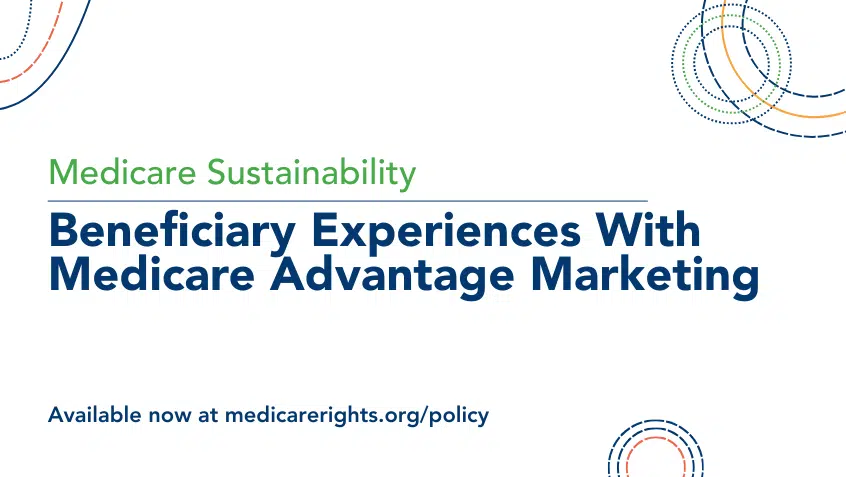Agents and brokers for MA plans receive commissions per enrollment and often receive additional “administrative” bonuses that balloon MA spending. These financial incentives drive aggressive and misleading marketing aimed at people looking for coverage. As a result, beneficiaries fall into the “MA Trap,” finding themselves enrolled in an MA plan that doesn’t meet their needs and without an efficient way to switch back to Original Medicare.
Read More
As the cost of care rises, beneficiaries increasingly look for plans that promise discounts or additional benefits. MA plans take advantage of this and flood potential beneficiaries with marketing calls, mailers, ads, and even in-person solicitation that can be deceptive and easily misunderstood.
Read More
Original Medicare has significant gaps in coverage, including very limited coverage of dental, vision, and hearing care. By advertising supplemental benefits that seem to fill these gaps and help tackle the cost of care and living, MA plans captivate the attention of beneficiaries struggling to afford care. But these benefits are not standardized or clearly communicated, falling short of their original promises.
Read More
To make it clear what a difference MSP enrollment can have in the lives of older adults and people with disabilities, and to support advocacy efforts to expand MSP eligibility and enrollment, Medicare Rights has compiled a set of case studies from its national helpline. These cases show what obstacles beneficiaries commonly face when trying to enroll and stay enrolled in MSPs and reinforce the role the benefit plays in real people’s lives.
Read More
In recent years, insurance companies have flooded the MA market with plans that are difficult to tell apart, creating overwhelm and confusion that costs both beneficiaries and the Medicare program more than Original Medicare. This part addresses the causes and consequences of the rapid proliferation of Medicare Advantage (MA) plans in the absence of adequate consumer guidance and federal regulation.
Read More
This part of the series explores the origins and structure of Medicare financing. Through an issue brief, infographic, and video, it outlines the various sources of funding for the three major parts of Medicare and lays out how projections and costs have fluctuated over the program’s history.
Read More
Under current site-specific payment rates, the same service can cost patients and Medicare vastly different amounts based on the location and hospital affiliation of the provider. This part of the series explains how these payment rules incentivize hospitals to vertically integrate routine care in order to drive up profits. Site-neutral payments offer a more rational alternative that would minimize arbitrary differences in cost and protect Medicare sustainability.
Read More
Without Medicaid, many Medicare enrollees—especially those with limited income—would struggle to afford care, risking their health or having to choose between medical care and housing, food and other essentials. Cutting Medicaid would directly harm millions of Medicare enrollees and increase costs for the Medicare program and state budgets.
Read More
Medicare guarantees access to health care for older adults and people with disabilities. Together with the Affordable Care Act (ACA) and Medicaid, Medicare builds health security and well-being for New Yorkers of all ages. Any changes to these programs, whether at the state or federal level, must aim for healthier people, better care, and smarter spending—not paying more for less.
Read More
This report features the top helpline trends and highlights the most commonly sought helpline and Medicare Interactive answers, providing a glimpse into the various questions and needs of Medicare beneficiaries, caregivers, and the professionals assisting them in the community in 2023.
Read More







